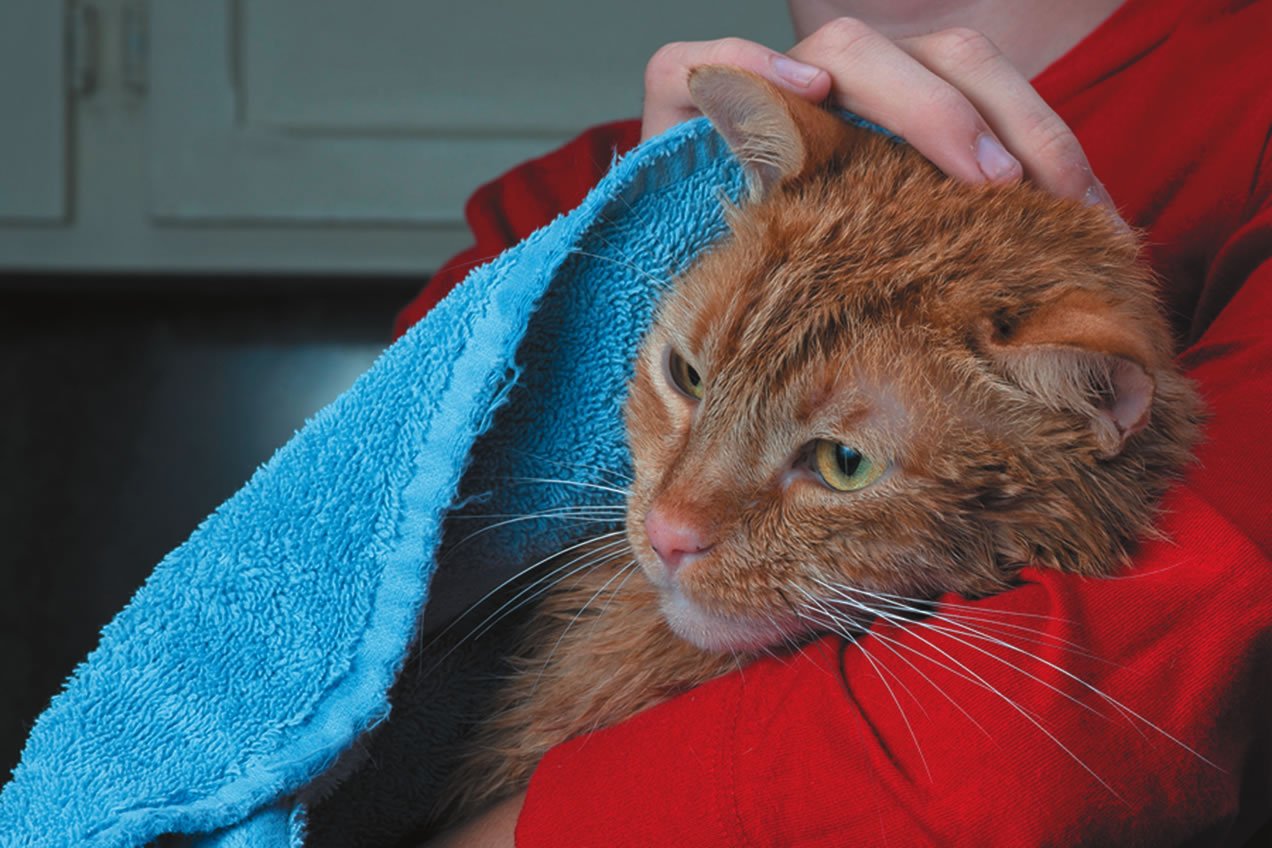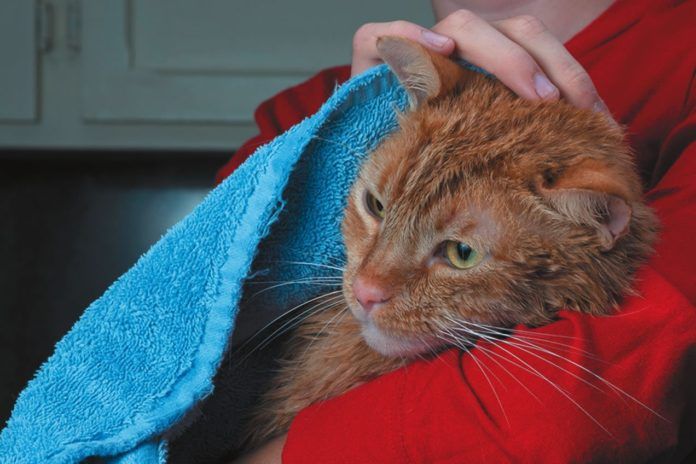© Sheila_F | Getty Images


If your cat all of a sudden seems gravely ill, don’t automatically assume it’s the end. “Sometimes something that seems quite dire may not be,” says Catnip editor-in-chief John Berg, DVM. “Even if a disease is not curable, it may be very treatable, and the cat can live a good quality of life for quite a while. We’ve delivered that news to a great number of relieved owners.”
In other words, it’s important to partner with your veterinarian before making a decision to put down a beloved cat. A vet cannot only make a diagnosis but also a prognosis. He or she can let you know whether aggressive medical therapy will afford the cat more quality time or whether you will be putting your pet through a complicated and potentially painful (and expensive) treatment only to give him a few more weeks in pain. A case in point: when one of Dr. Berg’s many cats, Buster, was diagnosed with a cancerous tumor in his voice box, Dr. Berg and his wife elected to have the cat undergo euthanasia rather than an aggressive surgery that would have included removal of their pet’s voice box and redirection of his trachea, only to give him a short time left recuperating from a complicated operation with a drawn-out aftermath.
Turning point
If your cat is sick and is being treated for a terminal disease, you may think it will be difficult to tell when he does not want to be alive anymore. It probably won’t be, even though cats are extremely good at hiding their pain. If your cat reaches a point that he refuses all food or water or will not move from a single spot — not even to go bask in sunlight in a favorite snoozing place — chances are high that he is saying he’s done.
Even so, it takes many owners a couple of weeks to make the decision, partly because they don’t want to lose the pet they love, and partly because they feel guilty about ordering a death. Eventually, however, most are able to separate what they want from what is good for their cat.
They can get past the guilt, too. The decision to put down a pet is an awful one to have to make. Even for the veterinarians at Tufts, it never gets easier, especially if it’s a cat we’ve been tending to for some time. But the option to euthanize is a good thing. Being in the throes of death is often agonizing, and euthanasia spares an animal that agony. It is an eminently peaceful way to go.
The day of the procedure
It’s best to schedule the procedure for a time that you can go straight home afterwards rather than having to rush off to work or some other appointment. You’re going to want to cry with abandon, or reflect meditatively, or otherwise have time to yourself to absorb what has just happened.
When you arrive at the vet’s office, pay up front. You’re not going to want to come back out to the receptionist’s desk and fill out paperwork and make small talk right afterward. [See box for the burgeoning trend in choosing euthanasia at home.]
The procedure itself will go smoothly and quickly, and rest assured your cat will have no idea what’s happening. It’s your role to stay loving and soothing rather than emotive to the point that he feels unnerved.
In some cases the doctor may administer a tranquilizer to keep your cat calm, but usually, by that point, the cat will probably already be quite weak and docile. The vet will then inject a combination of pentobarbital and phenytoin. The pentobarbital is a barbiturate that was once used as an anesthetic induction agent. Given in an overdose, it will cause your cat to literally fall asleep. It will also depress the respiratory system from within the brain, so respiratory and cardiac arrest will occur without your cat ever being aware. The phenytoin adds to the depression of the nervous system and actually stops the heart. It’s all over in a minute, sometimes in as little as 15 seconds.
You should remain in the room during the procedure if you can manage it. You’ll feel good afterward about having been there for your cat through the entire life cycle, and it will also help give a sense of closure.
As you grieve, if you feel your emotions are continuing to spill over even though you have spoken to friends and family about the loss, consider calling the Tufts Pet Loss Hotline at (508) 839-7966. [or check it out at vet.tufts.edu/petloss/.] A free service, it is run by veterinary students who receive training by a licensed psychologist.
Opting for Euthanasia at Home
More and more veterinarians are offering euthanasia at home so your cat will not have to make a last, unpleasant trip to the office. He can drift off peacefully right in his favorite spot.
One option is Lap of Love Veterinary Hospice & In-Home Euthanasia, a nationwide network of veterinarians who specialize in end- of-life care (lapoflove.com). Your own vet might offer the service, too, even if her or his office doesn’t advertise it. Euthanasia at home costs in the neighborhood of $100 more than euthanasia at the doctor’s office, but many pet owners feel it’s worth the added expense, both to keep their cat more comfortable and so they can grieve without having to drive or be




